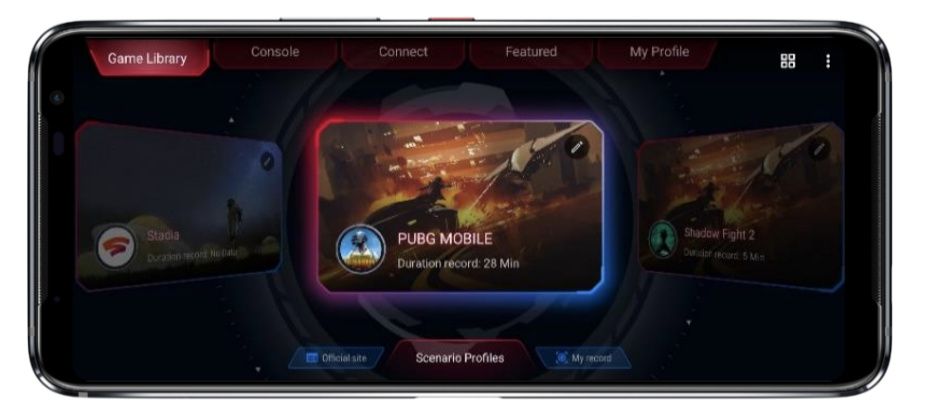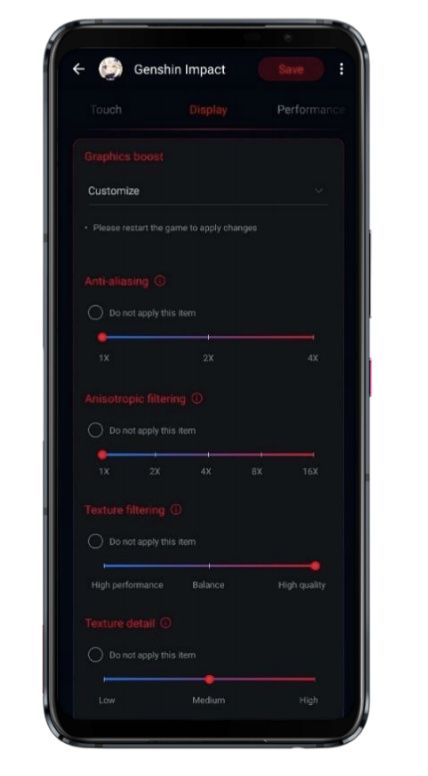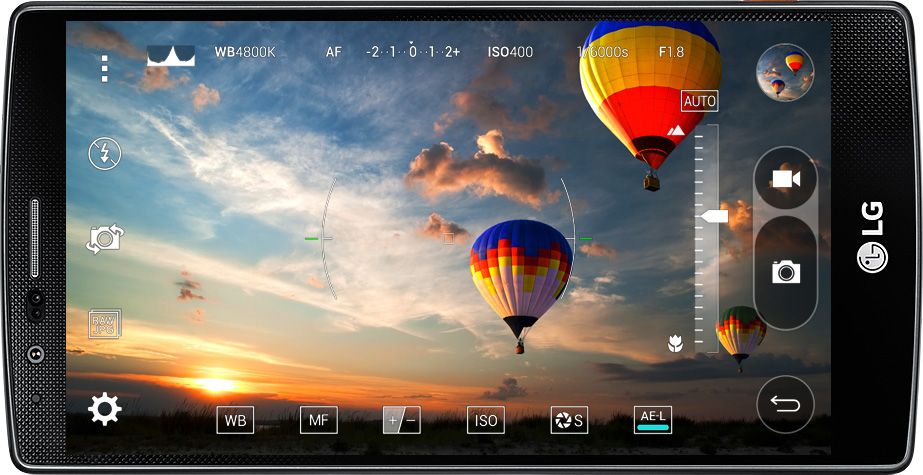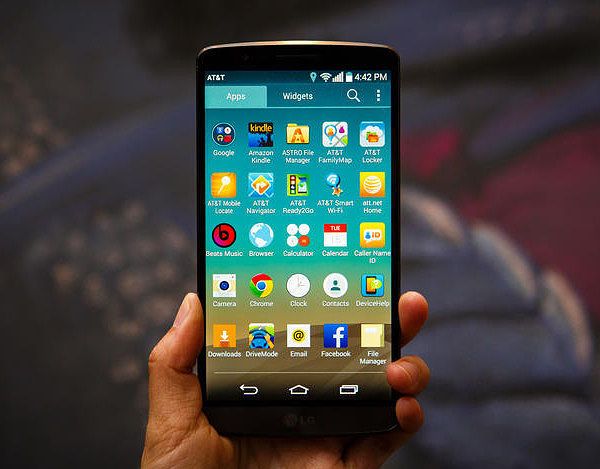The ROG range of products by ASUS is designed to facilitate serious gamers, and the ROG Phone aligns with this image. The ROG Phone is inarguably the most expedient gaming smartphone, featuring the most powerful chipset available for Android devices, RGB lighting, the highest refresh rate display on a smartphone, and a host of performance-enhancing accessories. After hailing the ROG Phone 3 as The King of Gaming Smartphones, we expect the next phones in the ROG portfolio only to go upwards and onwards. Skipping the number 4, ASUS launched the ROG Phone 5 series in March with three models instead of just one, including the ROG Phone 5, the ROG Phone 5 Pro, and a limited-edition ROG Phone 5 Ultimate.
ASUS ROG Phone 5 XDA Review
We will discuss all three in detail, but first, here’s a look at the ROG Phone 5 series specifications.
ASUS ROG Phone 5 Specifications
| Specification |
ASUS ROG Phone 5 / ROG Phone 5 Pro / ROG Phone 5 Ultimate (Limited Edition) |
| Build |
- Corning Gorilla Glass 3 on back
- Aluminum mid-frame
- Corning Gorilla Glass Victus on the display
|
| Dimensions & Weight |
- 172.8 x 77.2 x 10.29 mm
- 238 grams
|
| Display |
- 6.78″ FHD+ AMOLED display
- 2448 x 1080 pixels
- 395ppi
- Up to 144Hz refresh rate: 60Hz, 120Hz, 144Hz refresh rate supported, variable when set to Auto
- 20.4:9 aspect ratio
- HDR10+
- 800nits peak brightness
- Always-On display
- 111% DCI-P3, sRGB : 150.89%
- Contrast ratio: 1,000,000:1
|
| SoC |
Qualcomm Snapdragon 888:
-
- 1x Kryo 680 Prime Core @ 2.84GHz
- 3x Kryo 680 Performance Cores @ 2.4GHz
- 4x Kryo 680 Efficiency Cores @ 1.8GHz
|
| RAM & Storage |
- ROG Phone 5:
- 8GB LPDDR5 + 128GB UFS 3.1
- 12GB + 256GB
- 16GB + 256GB
- ROG Phone 5 Pro:
- ROG Phone 5 Ultimate:
- 18GB + 512GB ( ROG Phone 5 Ultimate)
|
| Battery & Charging |
- Dual 3,000mAh batteries in MMT design, total 6,000mAh
- 65W HyperCharge fast charging
- Qualcomm Quick Charge 5.0 support
|
| Security |
In-Display Fingerprint Scanner |
| Rear Camera(s) |
- Primary: 64MP Sony IMX686, f/1.8, 1/1.7″, 0.8µm, EIS, 4-in-1 Pixel binning
- Secondary: 13MP, ultra-wide-angle lens, f/2.4, 125° FoV, EIS
- Tertiary: 5MP, macro lens, f/2.0, EIS
Video:
- 8K@30fps
- 4K@60/30fps
- Slow-mo: 4K@120fps, 1080p@240/120fps, 720@490fps
|
| Front Camera(s) |
24MP, f/2.4, 0.9µm, 4-in-1 pixel binning |
| Port(s) |
- USB 3.1 Type-C on the side
- USB 2.0 Type-C at the bottom
- 3.5mm headphone jack
|
| Audio |
- 7-magnet Linear 12x16mm dual front-facing speakers
- Powered by dual Cirrus Logic CS35L45 Mono AMP and tuned by Dirac
- ESS Sabre ES9280AC Pro QUAD DAC
- Quad mics with OZO Noise Reduction Technology
|
| Connectivity |
- Bluetooth 5.2
- NFC
- Wi-Fi 6E
- 5G
- Dual-frequency (L1+L5) GNSS, Globass, Galileo, BeiDou, QZSS, NavIC
|
| Software |
ZenUI + ROG UI based on Android 11 |
| Other Features |
- Pixelworks i6 Processor
- Ultrasonic sensors for AirTrigger 5
- Grip press detection
- RGB dot-matrix ROG logo (ROG Phone 5 only)
- 2 Touch sensors on the back (ROG Phone 5 Pro & ROG Phone 5 Ultimate)
- ROG Vision – PMOLED display:
- ROG Phone 5 Pro: Color
- ROG Phone 5 Ultimate: Monochrome
|
| Colors |
- ROG Phone 5:
- Phantom Black
- Storm White
- ROG Phone 5 Pro:
- ROG Phone 5 Ultimate:
|
ASUS ROG Phone 5 Features
Internal hardware
While countless features make the ROG Phone 5 a breathtaking smartphone, its performance is definitely what forms the basis of its beastly identity. There are no points for guessing that the ROG Phone 5/5 Pro/5 Ultimate edition is powered by Qualcomm’s Snapdragon 888, which is among the most powerful mobile chipsets of 2021 — until we see a Plus upgrade of the same.
In addition to the mighty chipset, the ROG Phone 5 features up to 12GB of LPDDR5 RAM and 256GB of UFS 3.1 storage. The ROG Phone 5 Pro takes it up by a notch and features 16GB of RAM and 512GB of storage. While 16GB of RAM on the phone might be overkill for some users, the ROG Phone is not the average consumer’s average phone. That is why the Ultimate edition of the phone features a whopping 18GB of RAM. Additionally, the company claims it has deployed a new cooling system to redirect heat away from areas where your fingers rest while gaming.

While the ROG Phone 5 series maintains a similar design language as the previous generation, some key changes set the new devices apart from the ones in the past. Firstly, the phones are slightly longer. The longer slab accommodates a larger display but with bezels that are 25% smaller than the ROG Phone 3. Just like the last time, there is no notch or cutout for the camera, and the areas above and below the display are utilized for dual stereo speakers.
Design
As confirmed by its TENAA listing prior to the launch, the vanilla ASUS ROG Phone 5 features a dot-matrix pattern for the ROG logo on the back instead of an RGB strip. This dot-matrix lighting strip can also be seen on various ASUS gaming laptops, including the ROG Zephyrus G14. The new dot-matrix element can show a gradient of two colors on the ROG logo instead of just one color at a time.

ROG Phone 5
Meanwhile, the ROG Phone 5 Pro comes with a tiny colored PMOLED display, which the company is calling “ROG Vision,” and this can be used to display custom visuals or messages for incoming alerts and while the user is gaming on the phone. The ROG Phone 5 Ultimate, on the other hand, comes with a monochrome PMOLED “ROG Vision” display. The ROG Phone 5 is available in Storm White and Phantom Black color variants. The ROG Phone 5 Pro comes in a Glossy Black color variant while the Ultimate edition will be available only in a Matte White finish.

ROG Phone 5 Ultimate
Like the previous generation, the ROG Phone 5 series also comes with touch-sensitive shoulder buttons dubbed “AirTrigger.” While the regular variant features nine AirTrigger sensors, the Pro and the Ultimate editions come with two extra touch-sensitive sensors, called “Rear touch,” on the back.

With the bundled AeroActive Cooler, you get two additional physical buttons that can be mapped for various actions with the phones’ UI. Besides gaming, you can also assign different functions to these triggers, like launching an app or an action.

Display
The display on the ROG Phone 5 is bigger and brighter. The 6.78-inch AMOLED display is an E4 material panel custom-made by Samsung. The longer form factor also stretches the display’s aspect ratio from 19.5:9 on the ROG Phone 3 to 20.4:9 on the ROG Phone 5 series. Like the previous generation, the ROG Phone 5’s display sports a refresh rate of up to 144Hz. While there is no adaptive refresh rate, the display can support different modes such as 144Hz, 120Hz, and 60Hz that can be set manually or set to an Auto mode that changes the display’s refresh rate according to the active application. The display also has improved touch input with a touch sampling rate of 300Hz and touch latency of 24.3ms.

The display is claimed to be 23% brighter with a peak brightness of 800nits. For low-light usage and minimal eye-strain, the display brightness can be reduced to as low as 5nits. The display covers 111% of the DCI-P3 color gamut and comes with HDR10+ support.
The smartphones also come with a Pixelworks i6 display processor chip that uses AI to improve picture quality, upscale SDR content to HDR, suppress visual noise, improve the accuracy of adaptive brightness, and enhance color, especially skin tones. The Pixelworks processor also enables Always-on HDR on the ROG Phone 5.
Audio
The ROG Phone 5 series gets dual front-facing speakers with a 35% larger sound cavity (combined for both speakers), which results in a 21% louder output. For clarity, the speakers are tuned by Dirac. In addition to the dual stereo speakers, a 3.5mm headphone jack returns to the ROG Phone 5 along with an inbuilt premium-grade ESS SABRE ES9280AC Pro DAC for louder and more nuanced audio output through the jack. The smartphones are also Hi-Res certified and can play 24-bit audio files with supported audio devices. For audio via Bluetooth, the ROG Phone 5 supports codecs such as AAC, aptX HD, aptX adaptive, and LDAC.

Along with the hardware for an immersive sound, ASUS has included the AudioWizard app on the ROG Phone 5. The app comes with a 10-band equalizer, and different sound presets tuned by Dirac and headset profiles for improved sound output. Additionally, there is a bass enhancer, volume enhancer, and a game mode for improved stereo audio output.
Battery
The ASUS ROG Phone 5 series features the same 6000mAh battery but with many improvements this time around. Firstly, the battery is split into two cells of 3000mAh capacity and arranged in an MMT (Middle Middle Tab) orientation. The energy is supplied to these battery cells from the center instead of one of the ends to reduce impedance and heating while charging. The new battery design also benefits from the smartphone’s improved cooling system that further improves heat dissipation.

The ROG Phone 5 also benefits from much faster 65W HyperCharge fast charging technology. Both — the smartphone and the charger support Qualcomm’s Quick Charge 5.0 — and the charger is included in the bundle. To improve the battery’s life, you can also limit the maximum charge capacity to 80% or 90% or use the Scheduled Charging feature for slower yet more optimal charging if you tend to charge your phone every day — or night — at the same time.
Camera
The camera setup remains unchanged from the ROG Phone 3; the ROG Phone 5 series retains the 64MP Sony IMX686 sensor for the primary camera, a 13MP ultrawide-angle camera, and a 5MP macro camera. The smartphones also feature a 24MP selfie camera, which has also been carried over from the last time.

In terms of the software features, the ROG Phone 5 comes with a customizable camera UI, 8K video recording, 4K slow-motion, Dynamic Night Mode, Mic focus, Hypersteady Video, Pro Photo as well as Pro Video mode.
UI and Software features for gaming
Just like the previous devices, the ROG Phone 5 series comes with two prebuilt UI options. It allows users to switch between a gaming-inspired ROG UI or a simpler ZenUI, which resembles stock Android. The ROG Phone 5 devices come with Android 11 out-of-the-box. On top of these themes, you get customization options, including optional themes inspired by games. Using these themes, you can change the wallpapers, icons, in-call wallpapers, and the Always-on Display. Additionally, you get an assortment of new ROG-themed fingerprint indicator styles and animations, as well as new AOD clock options.


For gaming, ASUS has a special app called Armory Crate that lets users manage their games library and tweak settings per game with a console-like interface and haptic feedback. The Game Library shows different installed games in a card-view and allows users to sort them alphabetically or based on installation time or total gameplay duration.


Secondly, the “Scenario Profiles” let users change preferences for each game with different customization options for display, audio, and network performance settings. It also lets users change the level of CPU/GPU utilization that is permitted per game. Additionally, users can also modify settings for AirTriggers, lighting for the dot matrix display or the ROG Vision rear display, and the fan speed for the external cooler accessory using the Console feature in the Armory app. These individual settings override the default global settings.


Further, Game Genie gives users quick controls to enable or disable notifications while gaming on the phone, block navigation buttons, lock brightness to a specific value, and bypass charging so the charger’s power can be utilized directly. Users can also toggle details such as frame rate, refresh rate, CPU usage during the game, or use a shortcut to record their gameplay.

The ROG Phone 5 also features what ASUS calls the X Mode, which is a specialized gaming mode. When activated, the touch sensitivity of the phones’ display increases while the CPU, GPU, and RAM performance threshold limits are increased to delay throttling. When the AeroActive 5.0 cooler is connected, the X Mode changes to X Mode+.
In contrast, the Esports mode limits some features such as refresh rate and disables some other features such as AirTrigger sensors to ensure a sustained high performance during competitions.
Accessories
All three variants of the ROG Phone 5 come bundled with an Aero Case and a 65W HyperCharger, while the Pro and the Ultimate editions also come with a clip-on AeroActive Cooler 5.0 within the box.
ASUS claims the new AeroActive Cooler can help reduce the surface temperature by up to 15°C and the CPU temperature by 10°C. Additionally, it adds two physical trigger buttons and comes with a 3.5mm headphone jack and USB-C port, just like the previous generations. It also features a kickstand so you can enjoy gaming with an external controller or watch media on the phone while relaxing. What’s even more exciting is that the Cooler also comes with an illuminating RGB strip that can light up the ROG logo in different colors.

The ASUS ROG Phone 5 devices are also compatible with the ROG Kunai 3 gamepad, but you would need a new bumper case to install the phone in it. Alternatively, you can use the Kunai controller as is while resting the phone on a surface, enjoying the gameplay on either smartphone itself or an external display tethered to it.

You can also buy the ROG Gaming Clip that lets you mount the phone on top of an external controller like the official Xbox controller, Sony PlayStation DualShock, or Stadia controller. The mount also comes with a small USB cable that can be attached to the controller for lower latency than wireless transmission.

The ASUS ROG Lighting Armor case is an optional case that helps you enhance the rear lighting panel on the ROG Phone 5. It comes with pogo pin connectors to automatically match the color scheme of the rear display with the UI of the phone.

Lastly, you can get the Professional Dock which connects via USB-C and adds two USB 3.0 Type-A ports, a USB Type-C port, an Ethernet port, and an HDMI port. While the new Professional Dock is backward compatible with the ROG Phone 3, you will not be able to use the older Mobile Desktop Dock and TwinView dock with the new ROG Phone 5 series.

ASUS ROG Phone 5: Price & Availability
The ASUS ROG Phone 5 is priced as follows:
| Sr. No. |
Device |
Global |
India |
| 1. |
ASUS ROG Phone 5 |
- 8GB + 128GB: €799 (~$950)
- 12GB + 256GB: €899 (~$1069)
- 16GB + 256GB: €999 (~$1187)
|
- 8GB + 128GB: ₹49,999
- 12GB + 256GB: ₹57,999
|
| 2. |
ASUS ROG Phone 5 Pro |
- 16GB + 512GB: €1199 (~$1425)
|
|
| 3. |
ASUS ROG Phone 5 Ultimate |
- 18GB + 512GB: €1299 (~$1543)
|
|
Do note, the actual US prices are yet to be announced and the ones listed above are just direct EUR-USD conversions.
The vanilla ASUS ROG Phone 5 is already available in various markets around the world, but you will have to wait until April 15th, 2021 to buy the phone in India. The ROG Phone 5 Pro will be available starting later this month i.e. April 2021, while the ROG Phone 5 Ultimate will go on sale in May 2021.

The ROG Phone 5 Ultimate will be a limited edition release and it will come with a fan gift collection with a bunch of ROG merchandise. As you’d expect, the regional availability of the devices will differ greatly, but they will most likely be available on Amazon in most regions. In India, however, the phones will go on sale via existing e-commerce partner Flipkart.
ASUS ROG Phone 5 XDA Review || ASUS ROG Phone 5 XDA Forums
All of the variants will come with 65W chargers within the box.
The post ASUS ROG Phone 5: Everything you need to know before buying the gaming beast appeared first on xda-developers.
from xda-developers https://ift.tt/3bwk212
via
IFTTT











































